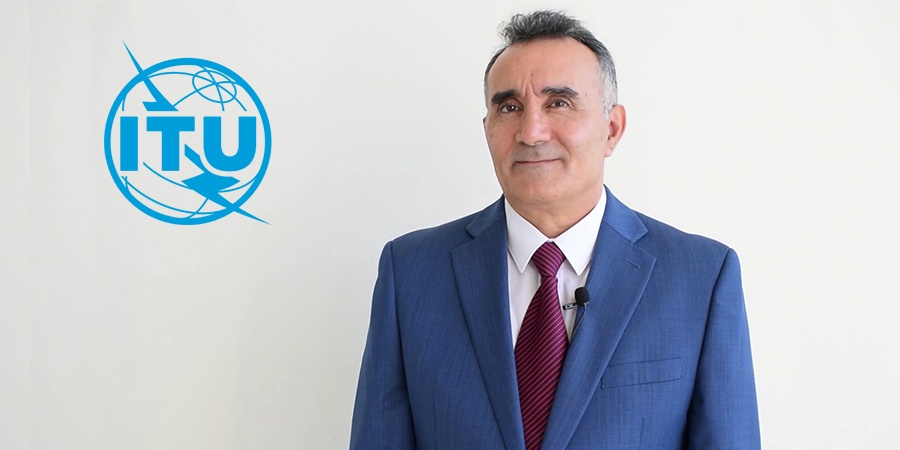Telecom Review conducted an exclusive interview with Dr. Bilel Jamoussi, Chief of the Study Groups Department of ITU's Standardization Bureau, to discuss the UN standards body’s performance and efficiency. Also, he shed light on the Digital Currency Global Initiative and shared some thoughts about how ITU standardization is coping with all the ongoing challenges.
How would you describe the performance of your standardization expert groups in recent years, and what is your strategy to maintain their efficiency and impact on international telecommunications?
Our study groups continue to develop international standards of great significance to global communications. For instance, 95% of the international traffic runs on fiber-optic networks standardized by the ITU, and over 80% of the network traffic uses our video compression standards. In the next few years, the challenge will be to reform the structure of some of the study groups to maintain relevance and have a very close engagement with the industry. Our actions will be guided by the two main strategic objectives of ITU, which are universal connectivity and sustainable digital transformation.
Money is evolving. Can you tell us more about the main objectives of the Digital Currency Global Initiative?
The Digital Currency Global Initiative is a collaboration between ITU and Stanford University, built on many years of experience in digital telecom services. Its main objectives are to focus on the use cases related to financial inclusion and emphasize the new trends in digital currency, including digital currencies backed by central banks. Another form of digital currency is the stablecoin, which is a cryptocurrency pegged to either fiat currency or the value of a commodity such as gold. The third form is the central bank digital currency (CBDC), which is the only digital money; a wide range of central banks are investigating CBDC and we are already seeing pilot implementations in countries such as the Bahamas, Jamaica, Nigeria and Sweden.
How will you improve current smart standards to result in green digital transformation?
Sustainable digital transformation, or green digital transformation, is one of two strategic priorities in ITU, and smart standards are a very important tool in enabling this transformation. When it comes to green, we have two facets: the first one to be careful about how much CO2 is generated by the digital space, ICTs themselves. On the other hand, the digital space can help reduce the energy consumption and CO2 footprint of other sectors. For example, working remotely from home means using a telecommunications network, so by that, you are avoiding transportation, which helps save CO2.
Moreover, we have a specialized study group that develops standards to measure the impact of ICT on the environment and how we can use ICT to mitigate the environmental impacts of other sectors. Looking at this from another perspective, as we develop smartphones, tablets and various devices, it's important that we have a circular economy perspective in mind where we can recycle and reuse metals existing in those devices. ITU has a number of standards that provide guidance on how to turn the challenge of environmental sustainability into a business opportunity to regroup those metals and recycle and resell them in the market.
What is your outlook on ICT’s growth in the coming years? How will ITU cope with ongoing challenges in a sector that undergoes a lot of changes?
Every day we see new innovations around the world. Our standardization work is helping to accelerate the benefits of AI and data in diverse areas of our lives, for example, in healthcare, natural disaster management, agriculture, and network management. AI is a frontier technology that is becoming pervasive in all aspects of life. Other new concepts are emerging such as the metaverse, built on a number of technologies in areas like AI, VR and high-bandwidth connectivity which allow simulations for designing new buildings and a immersive communications environments advanced enough to do medical surgery using AR.
Standards are needed to interconnect metaverse worlds and support the global adoption new technologies, like the quantum information technologies that will give us powerful quantum computers but also new cybersecurity threats that our standards must protect against. Technology is evolving rapidly, and ITU continuously stays engaged with our members in industry and academia, and our Member States, to ensure that there is a platform for dialogue for understanding these technologies, their impacts and how they can be used as a force for good, with the ultimate aim of making new technologies available and democratized for the entire world.
Telecom Review is hosting the ITU CxO meeting for the sixth time. What is the importance of this partnership with Telecom Review? How do you see our media as an ideal platform aligned with ITU’s goal?
We are very grateful for Telecom Review hosting our CxO meetings for the fifth time in six years; it’s a very supportive and successful partnership. It allows us to implement one of the ITU resolutions, which provides for our regular meetings with the industry leaders to look at new technologies, promote cooperation and coordination, and highlight areas of action well suited to our study groups.
This partnership has been a win-win for ITU and Telecom Review. This event hosts a productive exchange of ideas around new topics and gives valuable guidance to ITU on how we could best meet industry priorities. At this year's meeting, for example, we saw strong support for ITU studies towards new standards for metadata management in support of artificial intelligence and machine learning. The meeting also identified need for ITU to define metrics and key performance indicators for ICT companies to measure their progress towards the UN Sustainable Development Goals (SDGs), and ITU action aimed at supporting the harmonization of ICT companies' SDG reporting.










